Best cheap microphones for recording 2025: Budget microphones for studio and stage
Record instruments or vocals, make a podcast or boost live performances for less, with our pick of the best budget microphones around
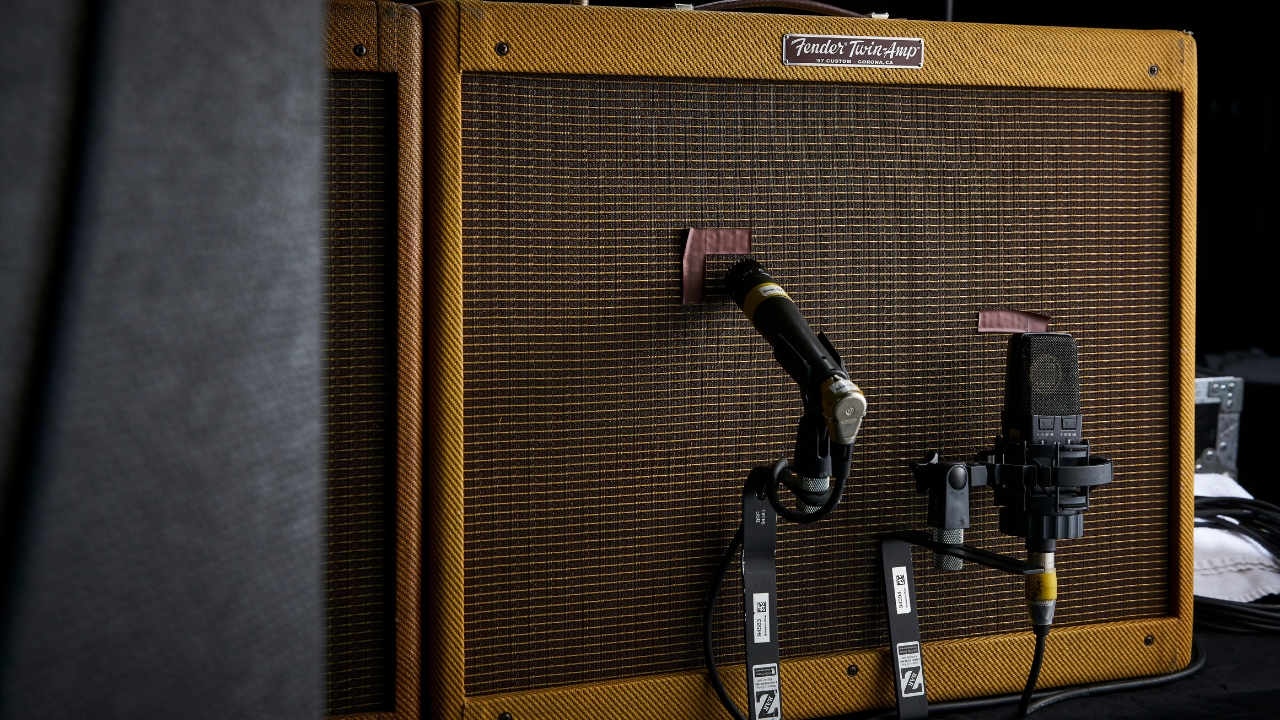
Just because you don't have a budget of Abbey Road proportions, doesn't mean you can't get great recorded tones. Many of the best cheap microphones for recording are more than accessible to us mere mortals, ready to help you achieve a supreme sound on your productions. Whether you're capturing an acoustic guitar with a single vocal, or you want to go the whole hog and mic a drum kit, our pick of the best budget-friendly mics will get you there.
We've got years of recording experience, from simple demos at home to working on full-fledged productions in professional studios. We remember our roots too, which leaves us in an excellent position to recommend a top-quality budget mic no matter what your needs. We've arranged our choices by use case to make it easier for you to pick, so you can get what you need whether it's drum overheads or a dedicated vocal microphone. Many of these microphones have a place in our own lockers, as well as those of professional studios, so you can rest assured you don't have to spend loads to get your own productions off the ground.
There's a lot of theory to getting a great recorded sound, and many technicalities you'll need to learn in order to pick the right mic. If you're new to recording or microphones, then we've got all the answers for you in our FAQ section, which has loads of questions answered by our expert writing team. If you just want to see the best cheap recording mics available today, then keep scrolling for our top picks.
Our top picks
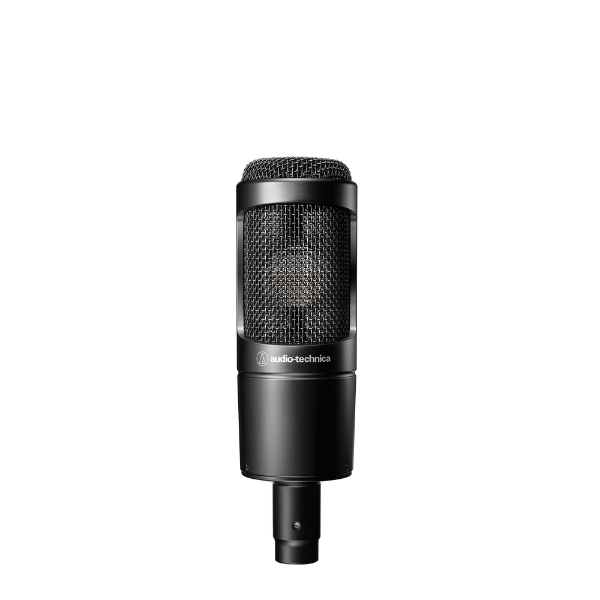
If you want a cheap mic that can do pretty much anything, the Audio-Technica AT2020 matches inherent versatility with a bargain bucket price. Whether you're adding vocals to a song, capturing the sound of a guitar cab, or recording a podcast, it will offer superb performance at a low cost.
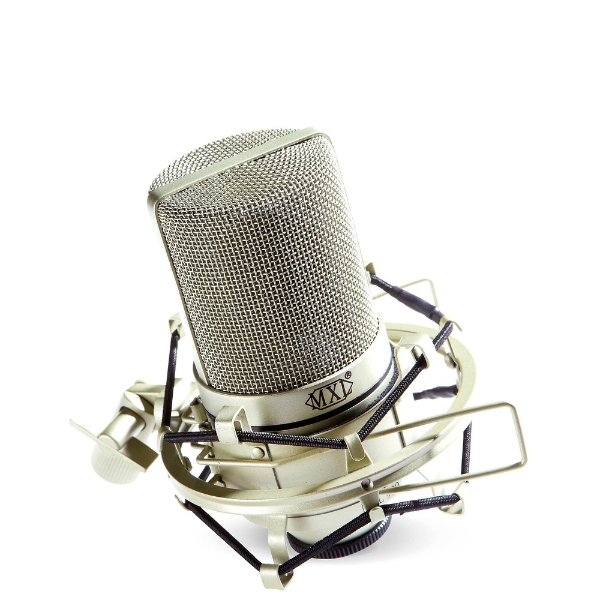
Vocals are at the forefront of any song, whether we like to admit it or not. Getting a good vocal microphone for your home studio is a must, and we love the MXL 990 Condenser Microphone for its balanced, musical sound and astoundingly good value price point.
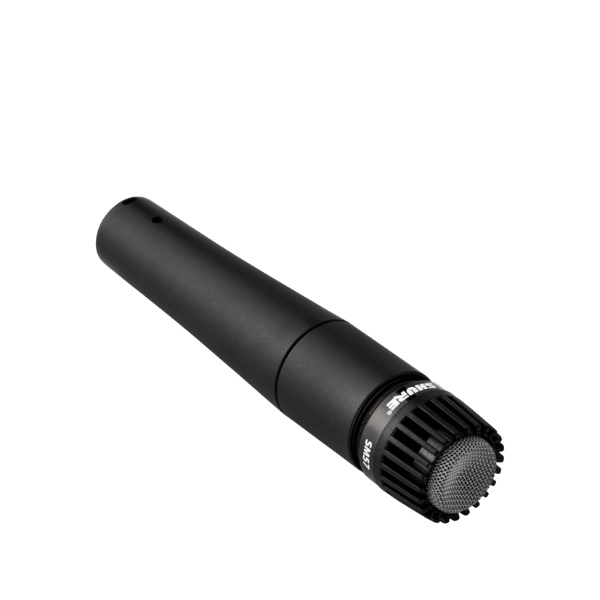
Chances are that if you’ve ever been in a music studio, a rehearsal room, or a live performance, then the Shure SM57 will have had some part to play. Fundamentally inexpensive, it's perfect for guitar cabs and snare drums amongst many other uses.
Best overall
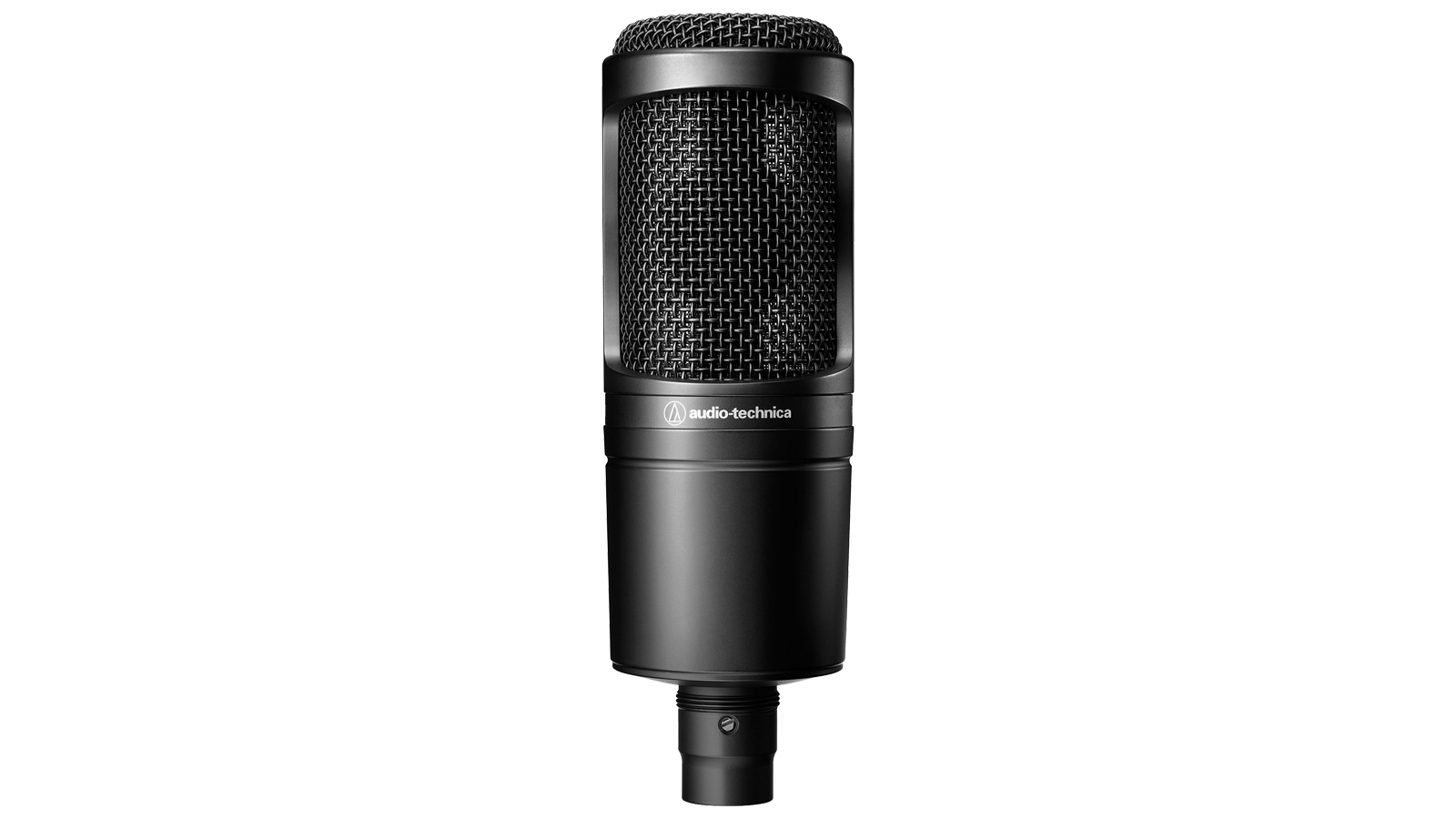
Specifications
Reasons to buy
Reasons to avoid
The Audio Technica AT2020 has gotten many plaudits for its open and natural tone, which at this price point is really quite impressive. For use on vocals, pianos, and for capturing room ambiance it performs remarkably well, you can even use it on a guitar cab to go alongside the more traditional dynamic mic sound too.
It’s got loads of warmth in the lower mid-range, so it will flatter your vocalist immensely, as well as working on a wide range of vocal ranges. It’s got a subtle peak in the high end that adds some air, but never pushes past that into harsh sibilance territory. It rejects off-axis sound remarkably well, and when we tried it on acoustic guitar gave us a great sound.
It’s not the quietest mic around, and Audio Technica has omitted a shock mount to keep costs down, but it’s built to the same standard as AT’s heftier-priced mics making it a worthy addition for the sound engineer on a budget.
Read the full Audio-Technica AT2020 review
Best for vocals
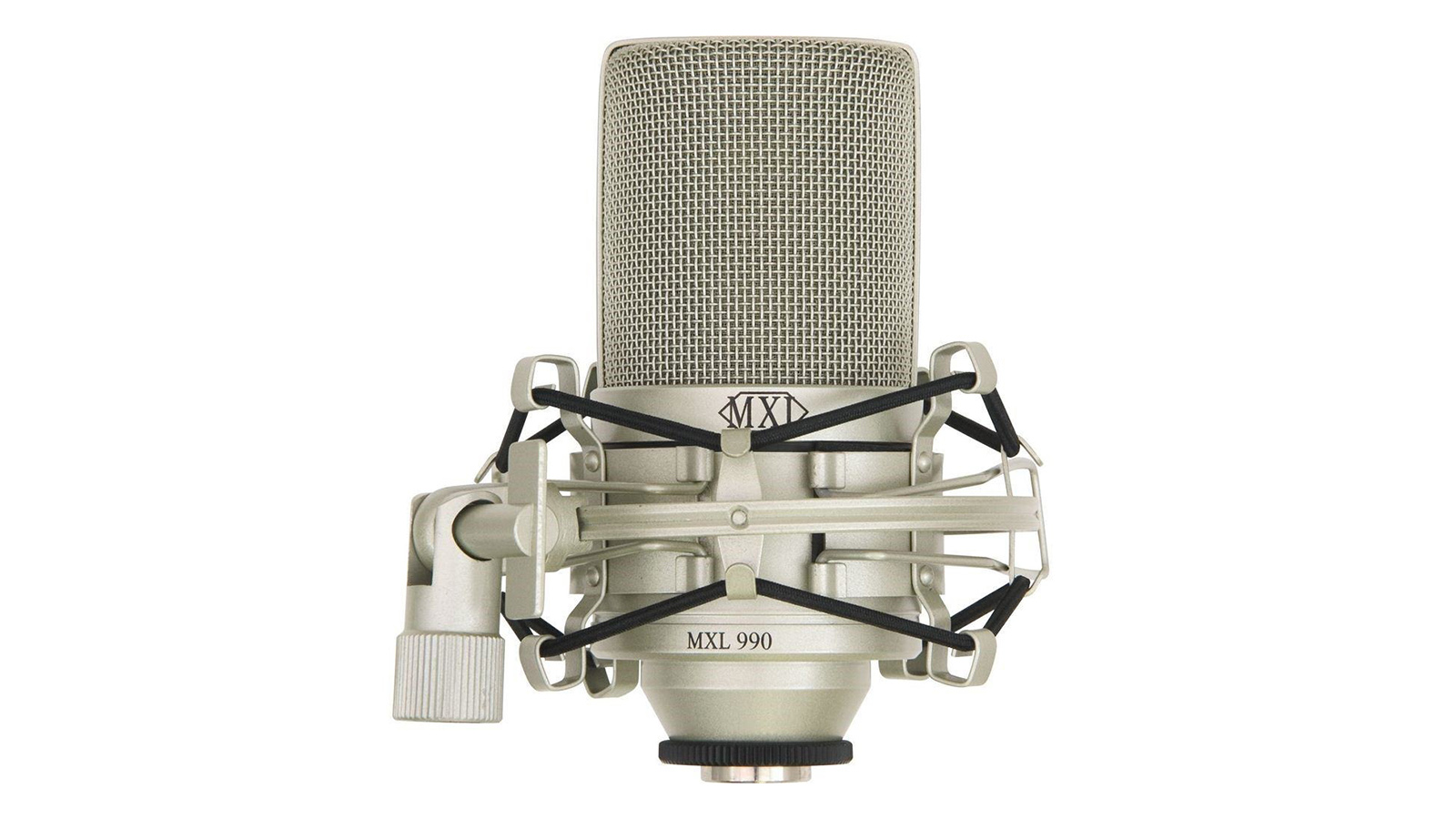
2. MXL 990 Condenser Microphone
Our expert review:
Specifications
Reasons to buy
Reasons to avoid
Recording acoustic instruments, like guitars or pianos, requires a special microphone to pick up all that natural goodness in the sound. Condenser microphones excel at this, where the extra precision helps you capture accurate, rich tones in a way dynamic mics can’t.
The MXL 990 is one such mic. Its large diaphragm ensures the captured sounds have colour and flavour which, for the price tag, are hard to beat. It's solid, musical and whilst it works great on vocals, you'll certainly find use for it on other instruments too.
It doesn't come with a shock mount, which will be an essential purchase for any vocals but for the money, there's a lot to love about this condenser mic. If you need a cheap mic for a range of vocal styles, it's hard to look past the MXL 990.
Best for instruments
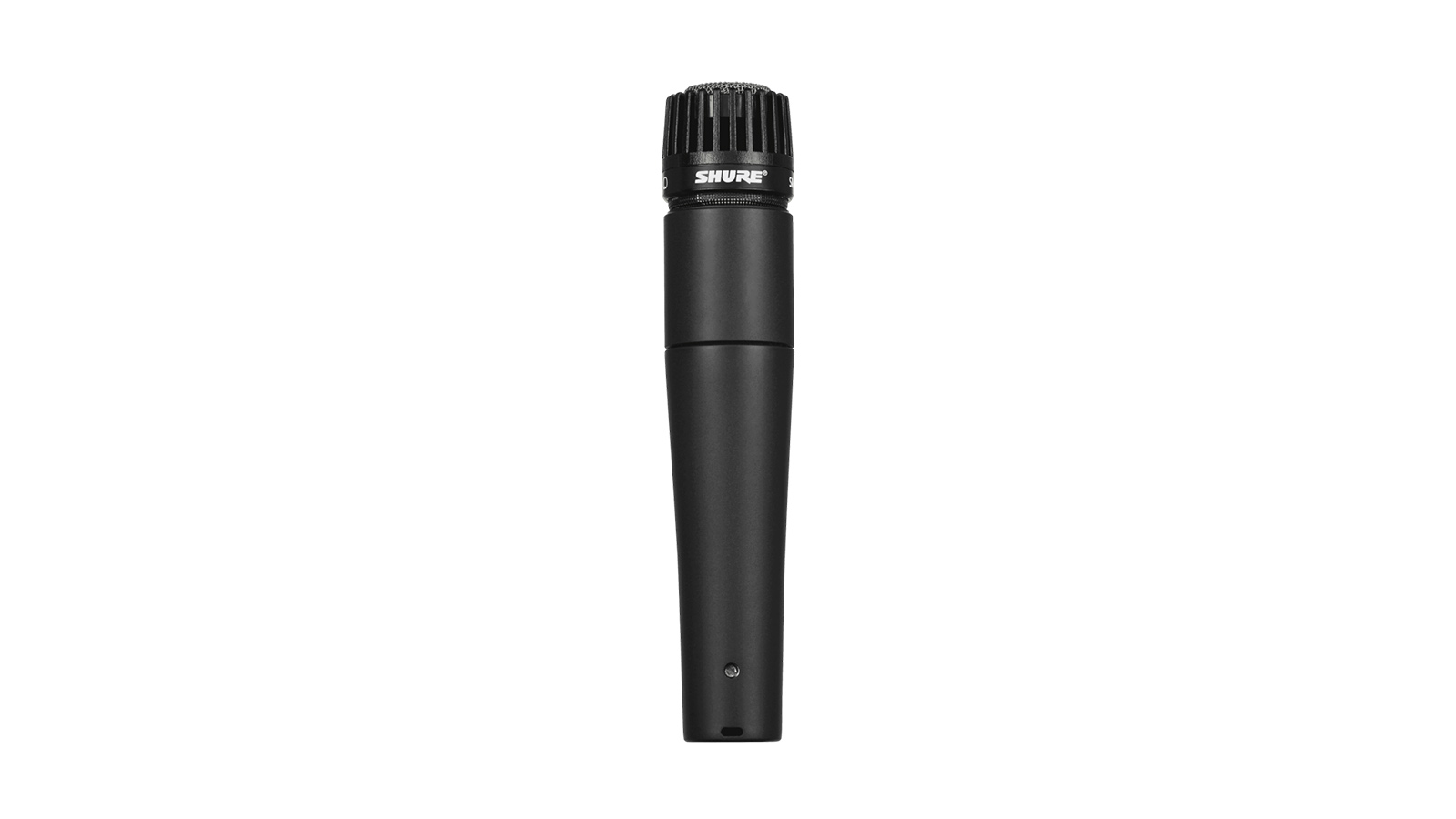
Specifications
Reasons to buy
Reasons to avoid
If you’ve seen a band play live in the last 30 years or listened to any music at all in that time, then the chances are you’ve heard the results of a Shure SM57 microphone. Put simply, they are the best-known and most widely-used dynamic microphones out there, and it just happens to be cheap as chips!
Although primarily an instrument mic, they excel in pretty much any situation. The tight pickup pattern means they receive sound only from one direction and reject it from immediately around it.
Hence, they’re great for snare drums, or guitar amplifiers, or anything where you need to capture a specific source. Simply point it and forget it. Happy days.
Read the full Shure SM57 review
Best drum overheads
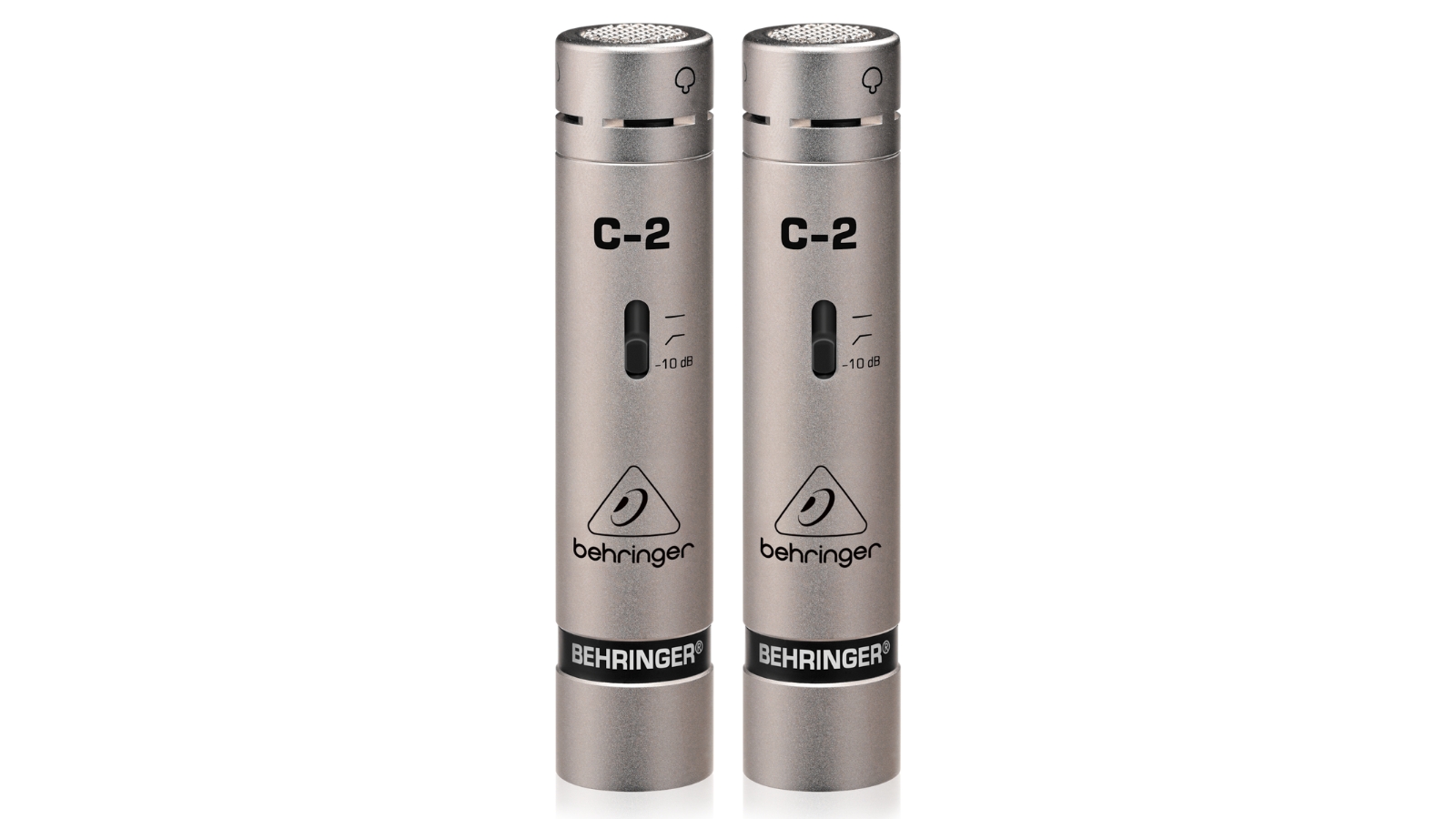
4. Behringer C-2
Our expert review:
Specifications
Reasons to buy
Reasons to avoid
We'll admit we were pretty skeptical when we first came across the Behringer C-2 condenser microphones. A matched pair of mics for less than £50/$60 seems like one of those deals that's too good to be true, but they absolutely do the job when your budget is tight.
We've used this pair for recording drum overheads using the Glyn Johns method, and they work fantastically well, providing a great capture of the true sound of the kit in a room. Paired with a good drummer and well-tuned drums, you can definitely get a great sound with these.
A switchable high pass filter and pad control on the mic panel make them even more versatile, although some will argue they're not necessary as they are voiced bright anyway. They come with a bespoke carry case too, that features a stereo bar mount for capturing acoustic guitar recordings, windshields for both mics, and mic stand mounts.
Best podcast mic
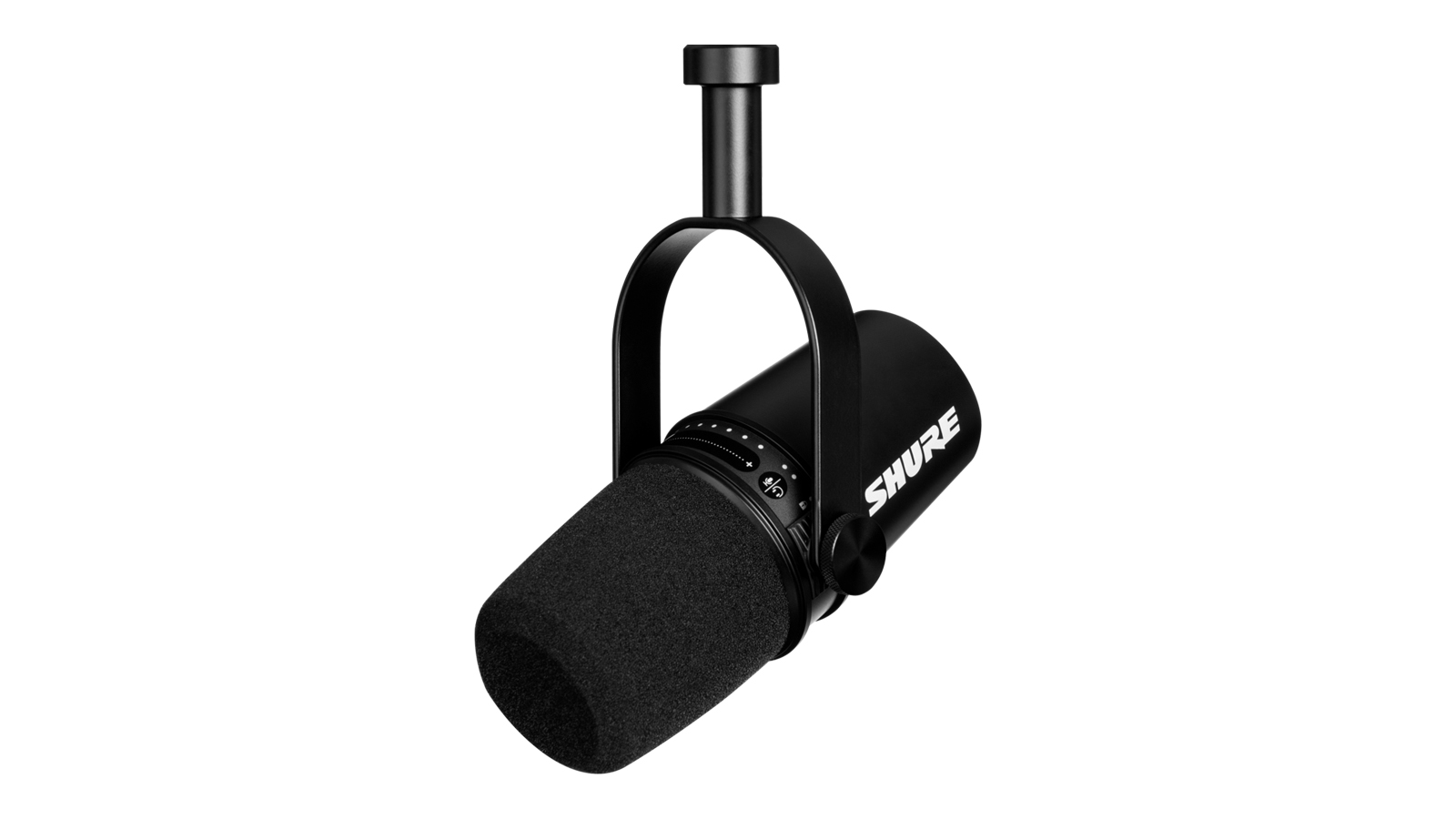
5. Shure MV7
Our expert review:
Specifications
Reasons to buy
Reasons to avoid
The Shure MV7 is a new entry in the list, combining the best of USB recording with traditional XLR capabilities into one of the best budget USB microphones around.
The bundled app, MOTIV, adds real value to the package, allowing you to select from a number of preset tones making it ideal for podcasters and streamers. We also like the auto-level feature, which greatly reduces the risk of accidentally clipping your recordings.
It is, it should be said, not strictly a ‘cheap’ microphone but for the price you get a superbly thought-out, fully-featured microphone that will serve you for years to come.
Read the full Shure MV7 review
Best for streaming

Specifications
Reasons to buy
Reasons to avoid
Not every recording situation is musical, and in the IK Multimedia iRig Studio there exists a superb entry-level microphone for recording podcasts, e-books and voiceovers. The iRig Mic Studio connects to your laptop or mobile device using USB, which makes it simple to get recording in no time.
Okay, the iRig isn't the best microphone for vocals or instruments, but if you are in the market for a well-built, simple mic to record – or stream – speech then you could do a lot worse for the money.
Read the full IK Multimedia iRig Mic Studio review
More options...
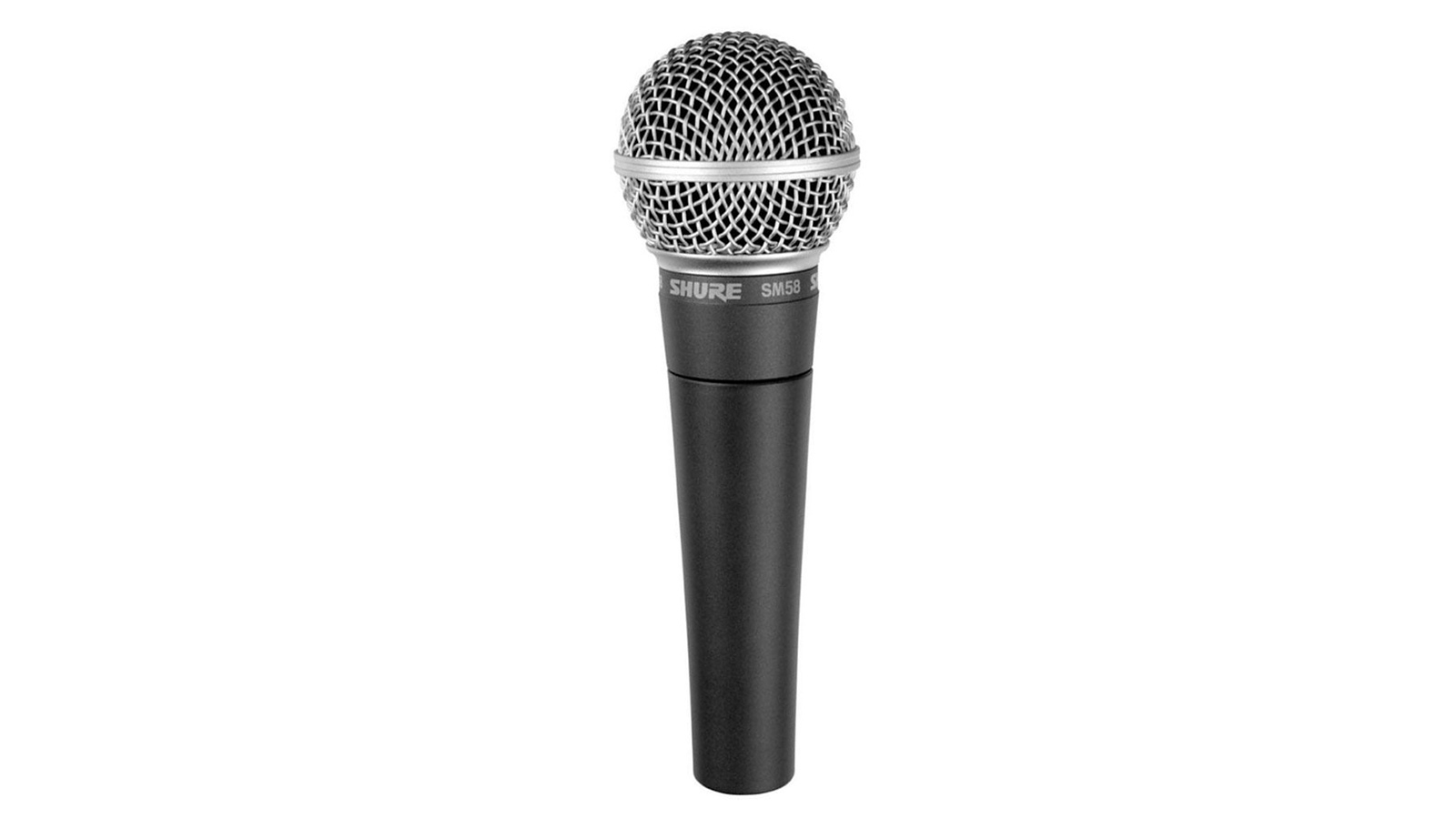
7. Shure SM58
Our expert review:
Specifications
Reasons to buy
Reasons to avoid
While an SM57 can do vocals, and do them well if you’re a singer you probably want something more readily-equipped to your needs. Thankfully, Shure has you covered. The Shure SM58 is the vocal equivalent of the SM57 and features the same tough construction and reliability but with a slight tweak in its frequency response meaning it enhances mid and upper frequencies to let your voice sing, so to speak.
SM58s excel in the live arena, where their ruggedness means they can survive all manner of abuse and still sound as good as the day you got it - meaning you don't need to buy twice, saving you money in the long run.
Read our full Shure SM58 review
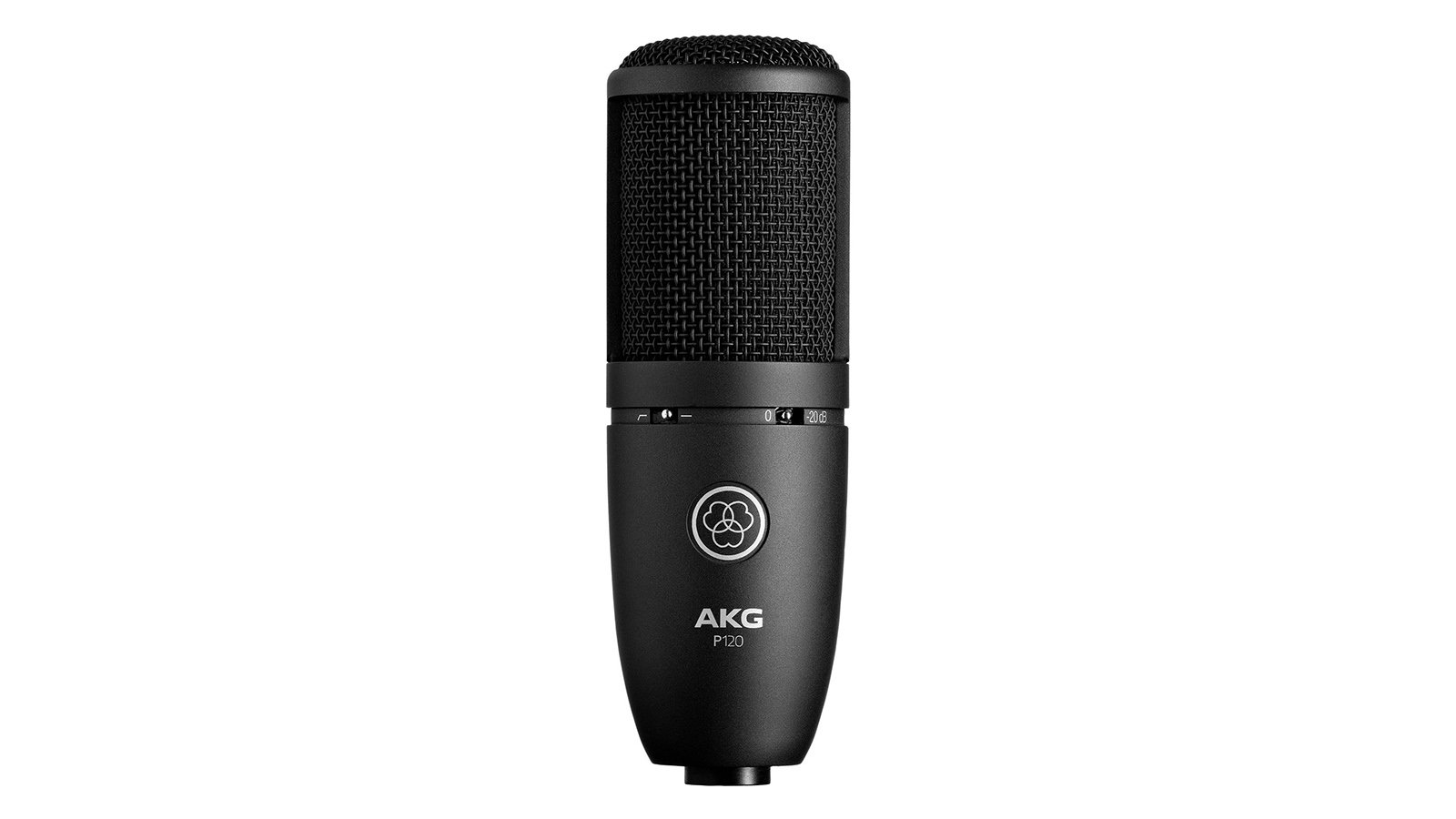
8. AKG P120
Our expert review:
Specifications
Reasons to buy
Reasons to avoid
If you’re on a budget but need a versatile, well-made mic that can work equally well across a range of applications then the AKG P120 might just be perfect. As a jack-of-all-trades condenser, the P120 is at home recording vocals, instruments and other sources and provides a balanced, clear sound.
It’s not a bad shout buying from a big name either; AKG is a well-respected brand in the mic world, so you know you’re getting quality across both the construction and the sound.
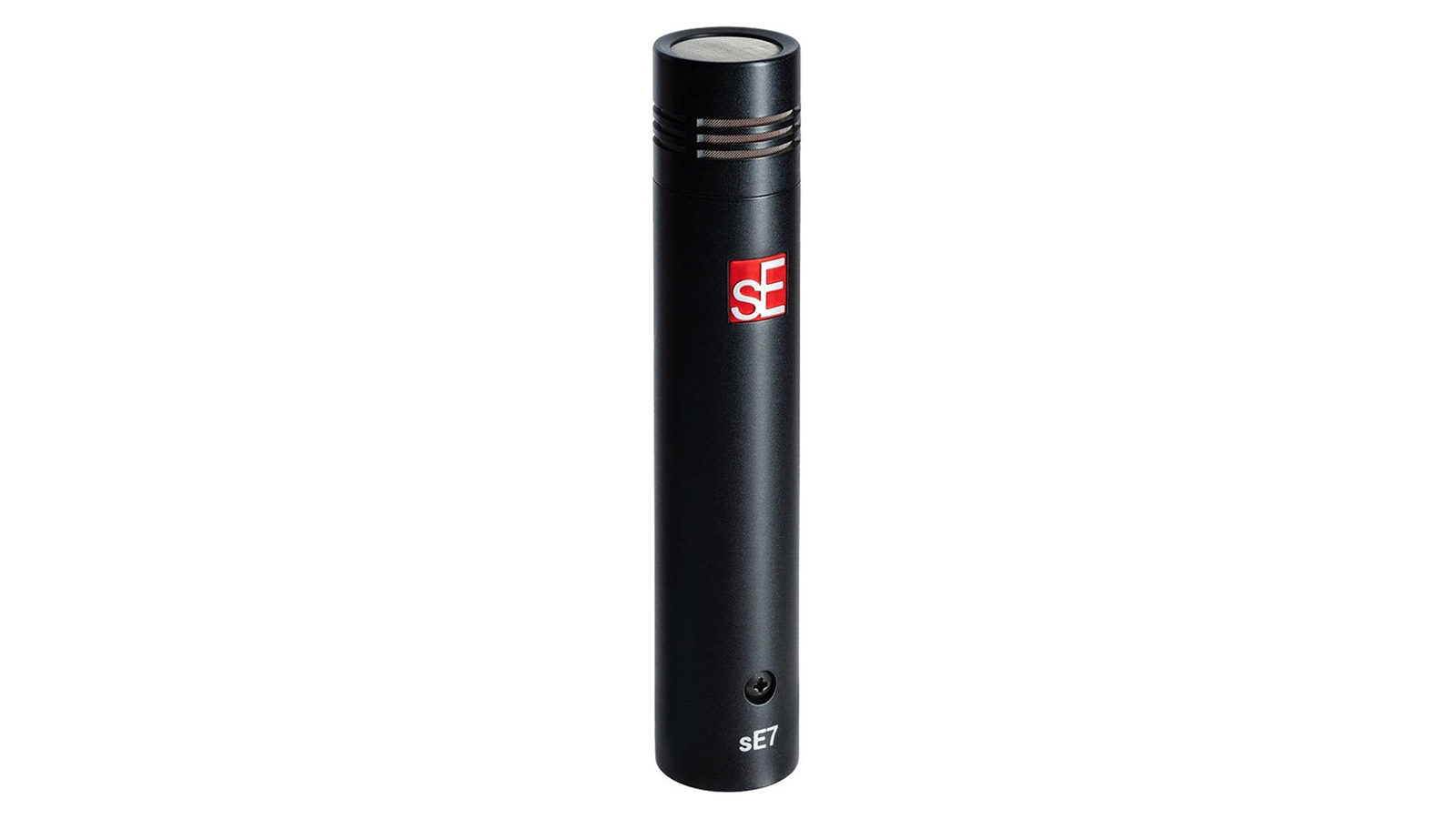
9. SE Electronics sE7
Our expert review:
Specifications
Reasons to buy
Reasons to avoid
Small diaphragm condenser microphones are great choices where there is a specific tonality you’re looking to recreate perfectly on your recordings. It could be cymbals, or acoustic guitar strings, or anything where you’re not looking to colour a sound too much at the point of recording.
The SE Electronics sE7 is an ideal choice here, where the small diaphragm makes for a neutral, balanced sound that lets the instrument shine.
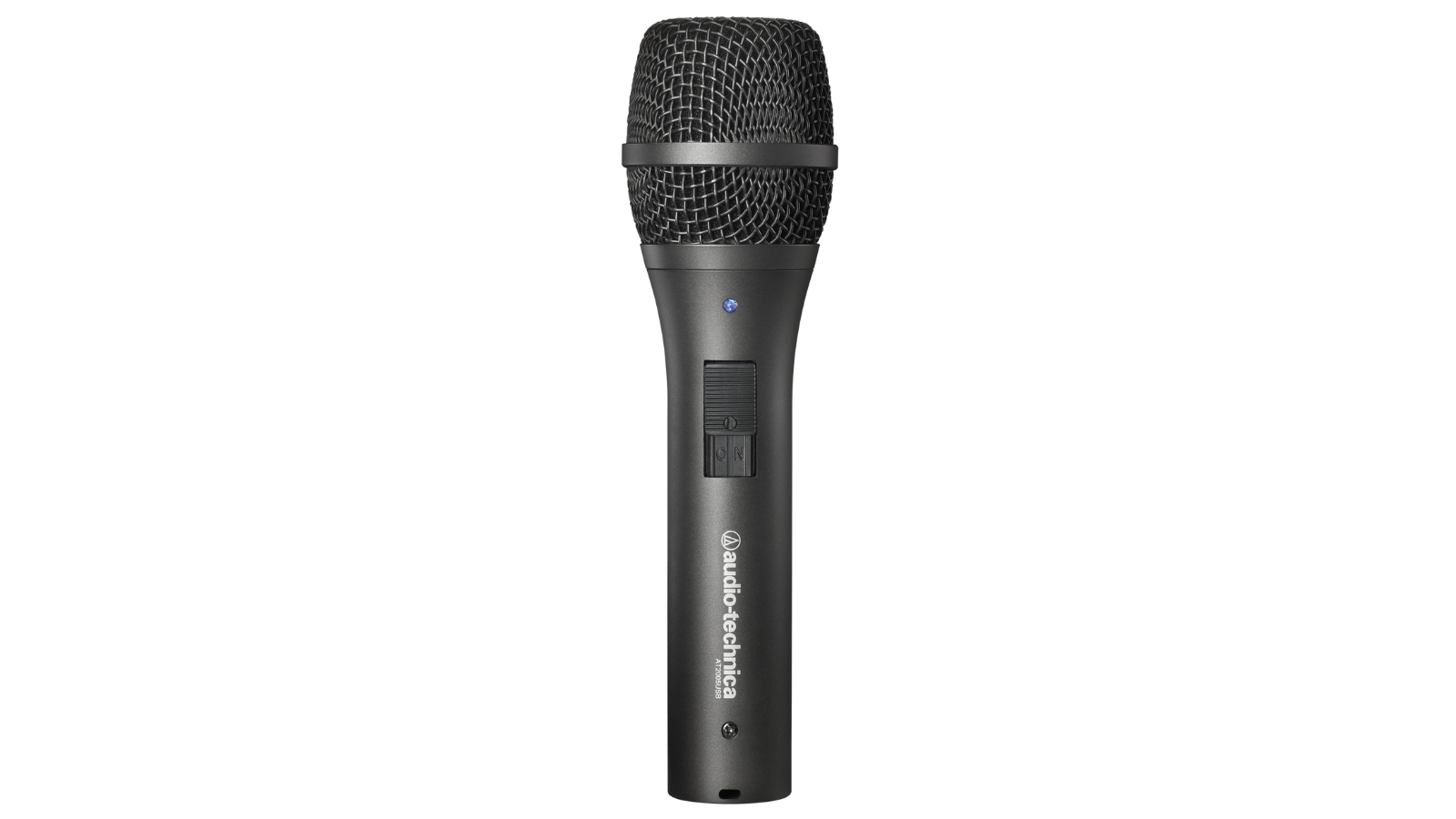
10. Audio-Technica AT2005USB
Our expert review:
Specifications
Reasons to buy
Reasons to avoid
While the Audio-Technica AT2005USB is one of the cheapest mics on this list, it has a huge ace up its sleeve in that it can function either as a regular XLR mic (meaning it’ll need a mixer or audio interface) or a USB mic, with all the added simplicity that comes with that.
Audio-Technica is a great brand, and while there are some cheap plasticky elements to the AT2005’s body, there’s more than enough going on here to make it an easy recommendation.
FAQs
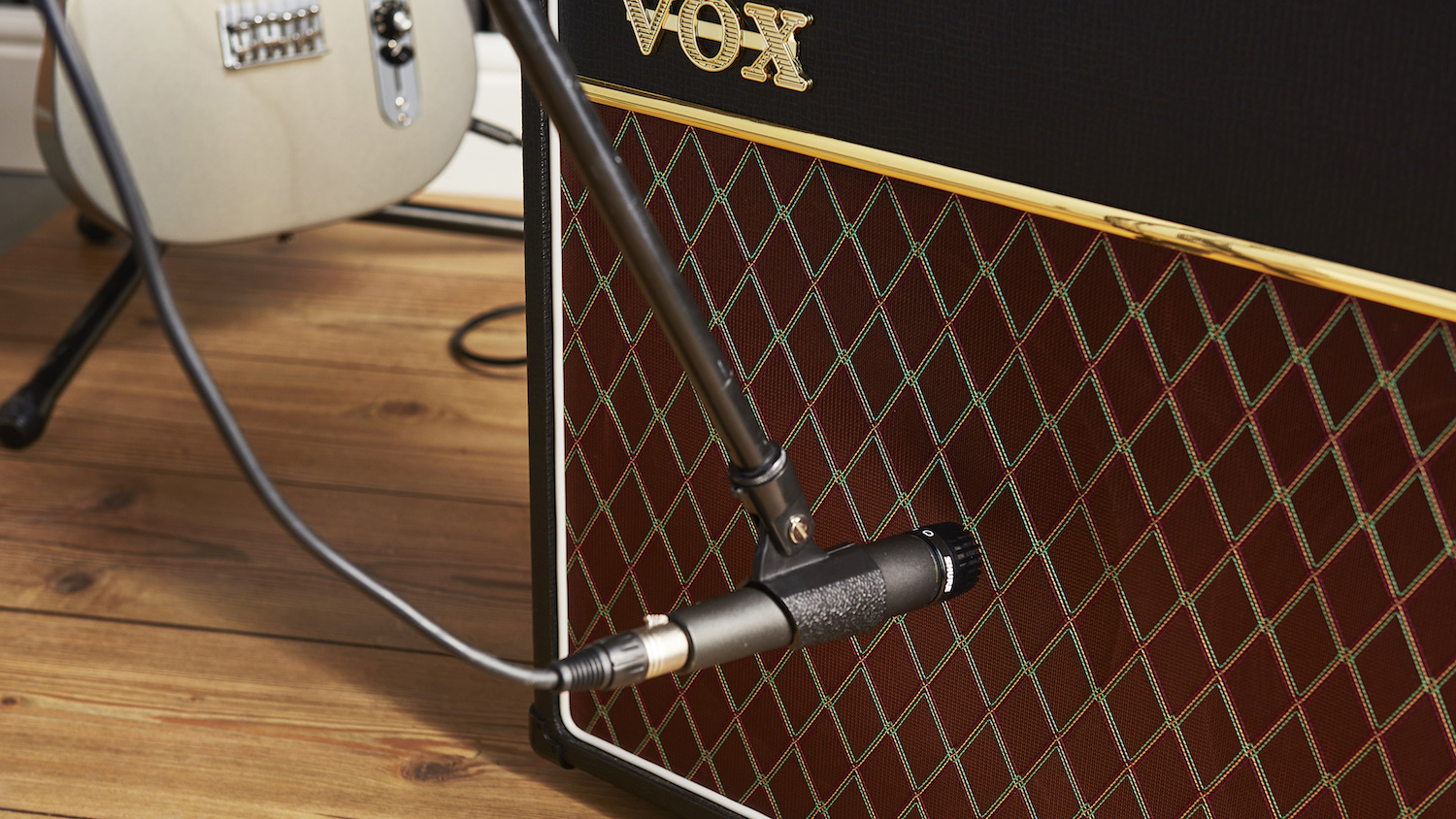
What is the best cheap microphone for recording?
Perhaps the first question you need to ask is how you plan on using the microphone. Microphones suited to live performance or being thrown in your bag after rehearsal, maybe aren’t the same as you’d choose for a studio session where precision and clarity are key.
At the entry-level point, where affordability is key, you’ll likely have a choice between a dynamic or a condenser mic. Dynamic microphones are inherently robust, and reliable. Their construction and method of operation are such that there are no moving parts, and they can be relied upon to thrive in hot, humid, loud environments like stages. They are not, however, considered to be the most precise form of microphone so in a studio situation they may not be the best choice.
Condenser microphones, however, are built with tonality and depth of sound in mind. They’re more fragile than dynamics, for sure, but what they lack in toughness they make up for in warm, rich recorded sound that elevates acoustic instruments and voices to another level.
If you’re looking for simplicity and will be using a laptop or smart device on which to record, you may be better off considering one of the many USB microphones on the market today. You dispel any notion that a USB mic can’t compete with traditional XLR connections - we’ve had great results from a variety of different mics by Shure, IK Multimedia, and others. So, you don’t need to let price be a compromise; check the product section of this guide for the best budget microphones out there today. Your recordings will thank you for it.
What brands make the best cheap microphones?
It's safe to say that you aren't short of choices when it comes to cheap microphones, but with so many out there, it can be challenging to separate the good from the bad.
Our advice would be to stick to the big-name brands, as you know precisely what you are getting. Companies such as Shure, AKG, and Sennheiser are staples of the microphone world, and as well as offering top-of-the-range options, they also have great-sounding units for those on a tighter budget.
That said, two of the most popular microphones in the world, the SM58 and SM57, aren't actually as expensive as you may have thought and are must-have options regardless of your budget.
What is the best budget microphone for vocals?
It’s pretty much established that for recording vocals, you need a large-diaphragm condenser microphone. Thanks to the size of the diaphragm, these mic types pick every nuance of the vocal sound, allowing you to fully capture the dynamics of sung lines. Pretty much any studio you go to will use some variation of this condenser type to record vocals.
Condensers are incredibly sensitive and can pick up everything in the room, which is why you’d rarely want to use one on a live vocal. For live vocals dynamic microphones work best, offering an SPL (Sound Pressure Level) that will handle the vocalist getting really close to the mic and absolutely belting it. Dynamic are typically very rugged as well, so can put up with getting chucked around the stage night after night.
What is the difference between a condenser microphone and a dynamic microphone?
They’re both microphones, but they both operate in completely different ways. Without getting too deep into the science behind it, dynamic microphones use electromagnetism to capture sound, whereas condensers work as a battery. Both use diaphragms that vibrate to capture the sound, similar to how an electric guitar pickup captures the vibration of the guitar string. The difference is a dynamic microphone uses a transformer to boost the signal, whereas a condenser has a magnetic plate which is then boosted using a phantom power supply.
Understanding the science behind these mic types isn’t crucial to using them, instead, it’s the use cases that you’ll want to understand more on. Dynamic microphones are great for loud sound sources, which is why you’ll often find them on live vocals, guitar cabinets, and snare drums. Condenser microphones on the other hand are better suited to natural sound sources like studio vocals, acoustic guitars, and pianos. These aren’t hard and fast rules though. We’ve gotten great sounds from a guitar cab using a condenser microphone, however, you need to be careful not to overload it, so use it on a loud source with caution.
What is phantom power and why do I need it for my microphone?
When condenser mics first appeared in the 1930s, they had big bulky power supplies attached to them to help boost the voltage and enable the signal to be amplified. Led by legendary manufacturers Neumann and Schoeps, the German engineers developed a way to deliver the DC power from the mixing desk and via the mic cable, preventing the need for a bulky additional power supply. Some condenser mics have a battery placed inside the microphone, but for the most part nowadays all condensers use phantom power.
You’ll only need phantom power on a condenser microphone, dynamic mics don’t need them as they already have a transformer inside. Most modern audio interfaces have a phantom power button somewhere, usually labeled ‘+48V’, so if you find you’re getting no sound from your shiny new condenser microphone, this is a good place to start looking!
It’s safe to plug a dynamic microphone into an interface or mixing desk with phantom power engaged as well, although we would recommend turning the power off when plugging or unplugging your mic to prevent any potentially speaker-damaging pops.
Should I use a directional or omnidirectional microphone for recording?
It all depends on what sound source you’re putting the microphone in front of. Omnidirectional microphones capture audio from all directions, whereas directional capture from one particular point on the microphone capsule. There are also cardioid and hypercardioid types, which is what you will often find on condenser microphones, where around half of the mic capsule captures sound whilst the other half rejects it.
To be honest for recording music, you’re not likely to come across many omnidirectional microphones. Typically you’ll be recording a sound source like a guitar cabinet or a singer, so there’s no point in picking up all the extraneous room noise from behind the singer as it will cloud your mix. For professional sound recorders, there are certainly some applications where the omnidirectional microphone is useful, for example recording the room sound in a properly treated acoustic space where a live classical performance is happening. For your average studio engineer or home recording musician, you’re not likely to find a use for one of these.
What is the difference between USB and XLR microphones?
The main difference here is of course the method by which it connects to your computer. A USB mic can go straight into your PC or Mac, whereas an XLR mic requires an audio interface to plug in to. No one method of connection is better than the other, it all depends on what you’re using them for. There are plenty of USB mics that feature the same quality sound as a more traditional XLR mic.
USB microphones are great for people who want a quick fix like game streamers and podcasters. They typically come with their own software and offer the plug-and-play functionality that means you don’t have to mess around with gain staging. Their ease of use means you don’t need any additional knowledge to get a great recorded sound.
An XLR mic on the other hand is more likely to be used in a live music capacity or recording studio. If you want to capture multiple signals at the same time, then XLR mics work much better than their USB counterparts, giving you more control over levels as well as the inputs and outputs.
How we test
At MusicRadar, many of our writers do their own recording in a variety of musical styles. We all appreciate that not everyone has the budget for a Neumann vocal mic, ourselves included so when it comes to pinpointing the best affordable microphones for recording, we leverages our experience from our own home studios as well as professional use in recording studios.
Selecting a budget-friendly microphone involves a discerning look at factors such as sound quality, versatility, build, and, of course, affordability. We've rigorously tested a variety of microphones, ensuring they deliver exceptional performance without breaking the bank, whether you're a beginner building your home studio or a seasoned producer looking for reliable backup options.
Our guides cover an array of recording scenarios, offering options for vocalists, instrumentalists, and content creators who seek excellent audio on a budget. Each recommendation in our guide has earned its place through thorough testing, guaranteeing that whether you're capturing vocals or instruments, the suggested affordable microphones from MusicRadar will be your trusted companions for achieving quality recordings - minus the hefty price tag.
Find out more about how we test music gear and services at MusicRadar.
More great budget music gear
MusicRadar's got your back
- Our pick of the best iPhone microphones
- Level up your audio with the best camera microphones
- The best budget studio monitors: affordable studio speakers
- Hold your microphone steadfast with the best mic stands
- Best home studio mixers: analog and digital mixing desks for all budgets
- Make yourself heard with the best XLR microphones
Get the MusicRadar Newsletter
Want all the hottest music and gear news, reviews, deals, features and more, direct to your inbox? Sign up here.
Chris Corfield is a journalist with over 12 years of experience writing for some of the music world's biggest brands including Orange Amplification, MusicRadar, Guitar World, Total Guitar and Dawsons Music. Chris loves getting nerdy about everything from guitar and bass gear, to synths, microphones, DJ gear and music production hardware.
- Matt McCrackenJunior Deals Writer
